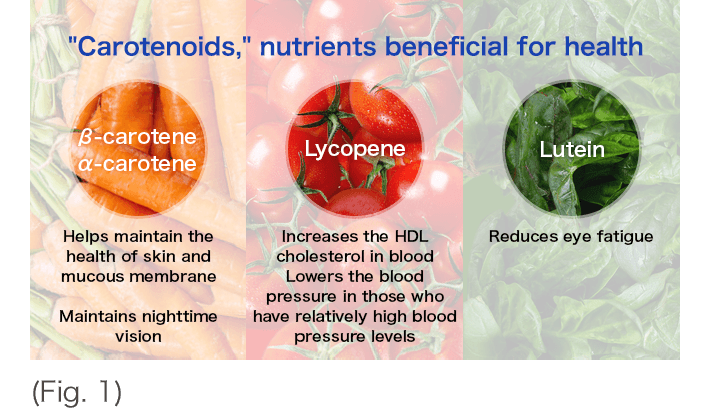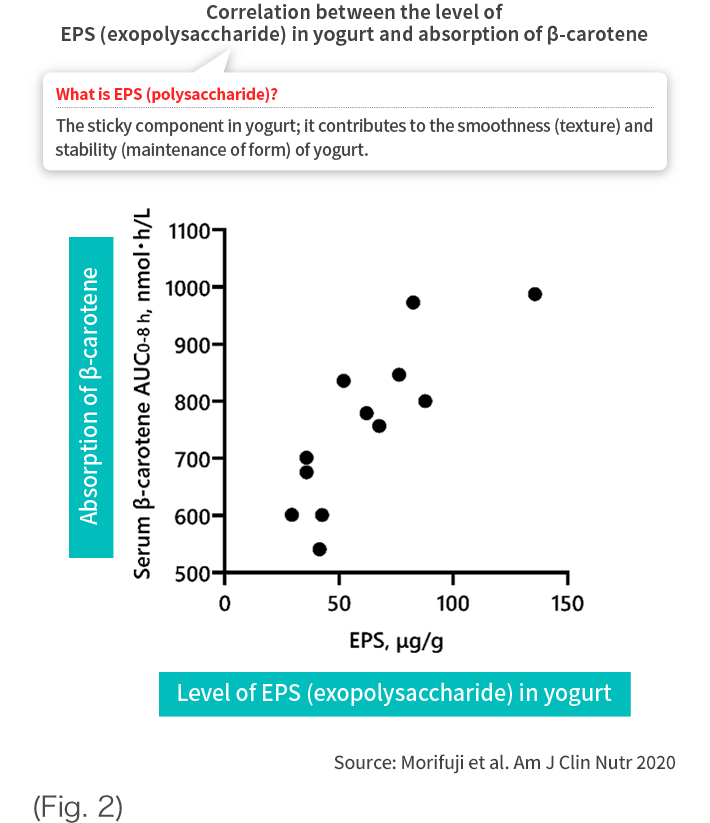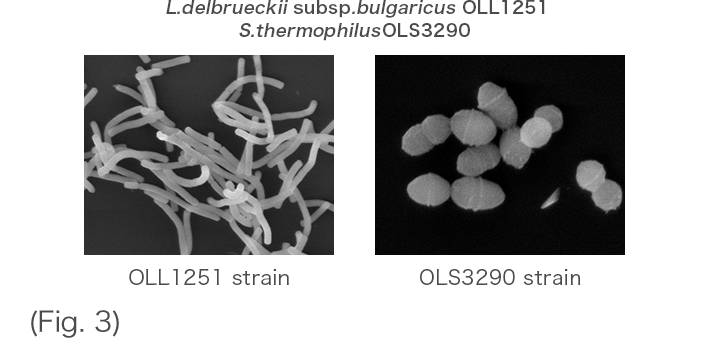
Carotenoids, the nutrients in vegetables and lactic acid bacterium
What are the health functions of carotenoids?
Vegetables are essential for obtaining sufficient nutrients, and they contain various nutrients including vitamins. Green and yellow vegetables in particular contain nutrients called carotenoids.
Carotenoids refer to the pigment components for red and yellow colors, and they are known to provide various health functions. For example, the β-carotene in carrots helps maintain the health of the skin and mucous membranes, as well as nighttime vision. Lycopene in tomato has been reported to increase the high-density lipo-protein (HDL) cholesterol in blood and lower the blood pressure, and is contained in many nutrition supplements and foods with function claims. Lutein, which is contained in spinach, reduces eye fatigue. As you can see, carotenoids are nutrients that help maintain our health (Fig. 1).

Relationship between carotenoid absorption rate and lactic acid bacterium
While carotenoids have beneficial effects on human health, their absorption rate varies depending on the method of intake. For example, when a carrot is eaten raw, only about 10% of its β-carotene is absorbed into the body. To maximize the health effects of carotenoids, we must use methods that improve their absorption rate from foods. Meiji therefore focused on the new possibilities of yogurt, and conducted a study on the amount of carotenoids absorbed when simultaneous eating vegetables and yogurt. Our results showed that the β-carotene concentration in blood serum increased when β-carotene and yogurt fermented by lactic acid bacteria were simultaneously administered to rats compared to administration of β-carotene alone, and that the components involved included milk protein and EPS (polysaccharide), which is a metabolite of lactic acid bacterium (Fig. 2).

Lactic acid bacterium which produces high levels of EPS (exopolysaccharide)
To further examine the benefits of simultaneous intake of yogurt and vegetables to humans, Meiji selected lactic acid bacterium strains that produced high levels of EPS (exopolysaccharide) from the Meiji Lactic Acid Bacterium Library, which contains approximately 6,500 different strains. The strains we selected were L. delbrueckii subsp. bulgaricus OLL1251 strain (OLL1251 lactic acid bacteria) and S. thermophilus OLS3290 strain (OLS3290 lactic acid bacteria) (Fig. 3).


















